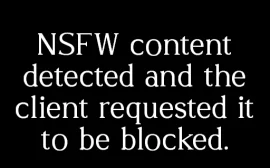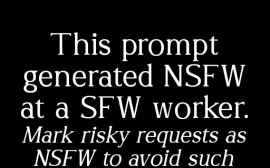Introduction: The Beauty and Care of Hardwood Floors
Hardwood floors represent a significant investment, imbuing homes with a sense of timeless elegance and warmth that few other materials can match. Their natural beauty, however, is not simply a given; it demands consistent and informed hardwood floor care. This comprehensive guide serves as a practical roadmap, providing a step-by-step system for maintaining the longevity and luster of your hardwood floors. From establishing daily cleaning routines to understanding the nuances of refinishing hardwood floors, we’ll explore the essential elements of preserving your investment and ensuring your floors remain a source of pride for years to come.
This is more than just cleaning; it’s about proactive home improvement and understanding the nuances of flooring materials. The allure of hardwood lies in its inherent character – the unique grain patterns, the subtle variations in color, and the way it ages gracefully over time. But this natural beauty is susceptible to the rigors of daily life. Dust, dirt, and debris act as abrasives, gradually dulling the finish and creating microscopic scratches. Spills, if left unattended, can seep into the wood, causing unsightly stains and even warping.
Therefore, establishing a consistent cleaning schedule is paramount. Regular sweeping or vacuuming with a hardwood floor attachment, combined with prompt attention to spills, forms the foundation of effective hardwood floor care. This proactive approach minimizes the need for more intensive interventions later on. It’s a simple DIY project with significant long-term benefits. Beyond daily maintenance, understanding the specific type of finish on your hardwood floors is crucial for selecting the best hardwood floor cleaner and maintaining hardwood floors effectively.
Surface sealants like polyurethane offer a durable, water-resistant barrier, while wax finishes require a different approach. Using the wrong cleaning product can damage the finish, leading to cloudiness, discoloration, or even premature wear. Oil-based cleaners can sometimes leave a residue, while water-based cleaners are generally considered safer for polyurethane finishes. Always consult the manufacturer’s recommendations or test the cleaner in an inconspicuous area before applying it to the entire floor. This is a critical step in preventing floor damage and preserving the integrity of your investment.
Preventing damage is just as important as cleaning. Simple measures, such as placing protective felt pads under furniture legs, can significantly reduce the risk of scratches and dents. Area rugs in high-traffic zones, like hallways and entryways, act as a buffer against wear and tear. Controlling humidity levels within your home is also essential, as excessive moisture can cause wood to warp or swell, while overly dry conditions can lead to cracking. Aim for a consistent humidity level between 30% and 50% to maintain the stability of your hardwood floors.
These preventative actions are key floor care tips that extend the life and beauty of your floors. Finally, even with the most diligent care, hardwood floors will eventually require refinishing. This process involves sanding down the existing finish and applying a new coat of sealant, effectively restoring the floor to its original glory. Refinishing is a significant undertaking, and it’s often best left to professionals. However, for smaller scratches and imperfections, wood floor repair kits offer a convenient DIY solution. Developing a hardwood floor maintenance schedule that incorporates regular cleaning, preventative measures, and timely repairs will ensure that your hardwood floors remain a stunning feature of your home for generations. Remember to research the best hardwood floor cleaner for your specific needs and always prioritize prevention when it comes to maintaining hardwood floors.
Cleaning: Daily and Weekly/Monthly Routines
**Daily Care:** The cornerstone of effective hardwood floor care lies in consistent daily maintenance. Sweep your hardwood floors daily, or even twice a day in high-traffic areas, to remove loose dirt, dust, and pet hair. A microfiber dust mop is an excellent choice as it attracts and traps particles without scratching the finish. Alternatively, use a vacuum cleaner with a specialized hardwood floor attachment; avoid using vacuums with beater bars, as these can cause scratches and dull the surface over time.
Promptly address spills by blotting them immediately with a clean, slightly damp cloth to prevent staining and water damage. For instance, a dropped glass of red wine, if left unattended, can penetrate the finish and leave a stubborn mark, necessitating more intensive cleaning or even professional intervention. Remember, prevention is always better than cure when it comes to maintaining hardwood floors. **Weekly/Monthly Care:** While daily sweeping tackles surface debris, weekly or monthly damp mopping provides a deeper clean, removing embedded dirt and grime.
Always use a hardwood floor cleaner specifically formulated for your floor’s finish. Avoid using excessive water, as it can seep into the seams and cause warping or other moisture-related issues. Instead, wring out your mop thoroughly so that it is only slightly damp. Consider using a spray mop, which dispenses a controlled amount of cleaner, minimizing the risk of over-wetting the floor. A helpful tip is to mop in the direction of the wood grain to prevent streaking and ensure even cleaning.
Regular damp mopping not only keeps your floors looking their best but also helps to prevent the buildup of dirt and grime that can dull the finish over time. **Product Recommendations and Application:** Choosing the right wood floor cleaner is crucial for effective and safe hardwood floor care. Bona Hardwood Floor Cleaner is a widely recommended option known for its pH-neutral formula that effectively cleans without damaging the finish. Swiffer WetJet Wood Floor Cleaner is another popular choice, offering a convenient spray-and-mop system.
However, always read the product labels carefully and ensure that the cleaner is compatible with your specific floor finish. When applying any cleaning product, follow the manufacturer’s instructions precisely. Avoid using harsh chemicals, abrasive cleaners, or vinegar, as these can strip the finish and damage the wood. For optimal results, consider using a microfiber mop head, which is gentle on the floor and effectively removes dirt and grime. Regularly replacing your mop head will also ensure that you are always cleaning with a fresh, clean surface.
**Beyond the Basics: Addressing Specific Cleaning Challenges:** Sometimes, daily and weekly cleaning routines aren’t enough to combat stubborn stains or scuff marks. For sticky residues, try a slightly damp cloth with a drop of dish soap, followed by a clean, damp cloth to remove any soap residue. For scuff marks, a tennis ball can be surprisingly effective; simply rub the tennis ball over the scuff mark to buff it away. For particularly challenging stains or damage, consult a professional hardwood floor cleaning service.
They have specialized equipment and cleaning solutions that can safely and effectively remove stubborn stains and restore the beauty of your floors. Remember to always test any cleaning solution in an inconspicuous area first to ensure that it does not damage the finish. **Creating a Hardwood Floor Maintenance Schedule:** To ensure the longevity and beauty of your hardwood floors, establish a consistent hardwood floor maintenance schedule. This schedule should include daily sweeping or dust mopping, weekly or monthly damp mopping, and periodic deep cleaning as needed.
Consider the traffic and usage of your floors when determining the frequency of cleaning. High-traffic areas may require more frequent cleaning than less-used areas. By adhering to a regular maintenance schedule, you can prevent the buildup of dirt and grime, protect the finish, and keep your hardwood floors looking their best for years to come. This proactive approach to hardwood floor care will not only enhance the beauty of your home but also save you time and money in the long run by preventing costly repairs and refinishing.
Damage Prevention and Control
“Damage Prevention and Control: Safeguarding Your Hardwood Investment” Protecting your hardwood floors from damage is paramount to preserving their beauty and extending their lifespan. Proactive measures, coupled with swift action in case of accidents, can significantly reduce the need for costly repairs or premature refinishing. Implementing a few simple strategies can make a world of difference in maintaining the pristine condition of your hardwood floors. One of the most effective preventative measures is the strategic use of protective pads under furniture legs.
These pads, available in various materials like felt or rubber, create a barrier between the hardwood and the furniture, preventing scratches and dents from everyday movement. Consider opting for heavier-duty pads for frequently moved furniture pieces, such as dining chairs. This small investment can prevent significant wear and tear over time, preserving the surface of your floors. In high-traffic areas, such as hallways and entryways, area rugs are invaluable. They not only add warmth and style to your space but also act as a protective shield against dirt, grit, and heavy foot traffic.
Choose rugs with non-slip backings to prevent shifting and potential tripping hazards. Regularly cleaning these rugs will also minimize the amount of debris that could be ground into the hardwood. Controlling humidity levels is crucial for the long-term health of hardwood floors. Excessive moisture can lead to warping and buckling, while excessively dry conditions can cause the wood to shrink and crack. Maintaining a relative humidity between 30% and 50% is generally recommended. Using a humidifier during dry months and a dehumidifier in humid months can help regulate moisture levels and protect your floors from these damaging effects.
Investing in a hygrometer to monitor humidity levels can help you make informed adjustments and maintain the optimal environment for your hardwood floors. For spills, immediate action is essential. Blot, don’t rub, the spill with a clean, absorbent cloth to prevent the liquid from penetrating the wood. For stubborn stains, avoid using harsh chemicals that could damage the finish. Instead, opt for a specialized hardwood floor cleaner or consult a professional for advice. Addressing scratches promptly can prevent them from becoming more noticeable over time.
A wood floor repair kit, available at most home improvement stores, can provide a quick and effective solution for minor scratches. For deeper scratches or more extensive damage, consulting a professional for assessment and repair is recommended. Water damage requires immediate professional attention. Excess water can warp and damage the wood, potentially leading to costly repairs or replacement. A professional can assess the extent of the damage and recommend the appropriate course of action, which may involve drying, repairing, or replacing affected boards. By incorporating these preventative measures and responding promptly to accidents, you can protect your investment and keep your hardwood floors looking beautiful for years to come. Remember, consistent care and attention to detail are key to maintaining the longevity and luster of your hardwood floors, enhancing the beauty and value of your home.
Cleaning Products and Floor Finishes
“Understanding Your Floor’s Finish: The Foundation of Effective Hardwood Floor Care” “Identifying the type of sealant protecting your hardwood floors is the first crucial step in establishing an effective cleaning and maintenance routine. Different finishes react differently to cleaning products, and using the wrong product can lead to dulling, streaking, or even damage. Common surface sealants include polyurethane (both oil-based and water-based), wax, and penetrating oil finishes. Polyurethane is known for its durability and resistance to scratches and stains, while wax provides a classic, warm sheen.
Penetrating oils offer a more natural look and enhance the wood’s grain but require more frequent maintenance. Knowing your floor’s finish—often available from the installer or flooring manufacturer—will guide you toward the right cleaning products and procedures.” “Matching Cleaners to Finishes: A Critical Partnership for Long-Term Beauty” “Once you’ve identified your floor’s finish, selecting the appropriate cleaner becomes paramount. Using a water-based cleaner on a wax finish, for example, can create a cloudy haze. Conversely, using an oil-based cleaner on a water-based polyurethane finish can leave a sticky residue that attracts dirt.
For polyurethane finishes, pH-neutral cleaners are generally recommended. Waxed floors typically require specific wax cleaners or solvents. Oil-finished floors often benefit from specialized oil soaps that clean and replenish the protective oil layer. Always test any new cleaner in an inconspicuous area before applying it to the entire floor to ensure compatibility and avoid unwanted reactions.” “Navigating the World of Hardwood Floor Cleaners: Quality, Ingredients, and Application” “The market offers a wide array of hardwood floor cleaners, making informed choices essential.
Look for reputable brands with positive reviews and clear instructions. Consider environmentally friendly options with low VOCs (volatile organic compounds) for a healthier home. Scrutinize ingredient lists, avoiding harsh chemicals that could harm your floors or family. When applying any cleaner, always follow the manufacturer’s instructions, paying close attention to recommended dilutions and application methods. Less is often more with hardwood floor cleaning; excessive moisture can damage the wood and compromise the finish. Using a slightly damp mop—never soaking wet—is crucial for preventing water damage and ensuring effective cleaning.”
“Preventing Floor Damage: Proactive Measures for Long-Lasting Beauty” “Beyond regular cleaning, proactive measures can significantly extend the life and beauty of your hardwood floors. Protective pads under furniture legs prevent scratches and dents from everyday movement. Strategically placed area rugs in high-traffic areas minimize wear and tear. Controlling humidity levels within the recommended range (typically 30-50%) prevents warping and buckling. Swiftly addressing spills—especially acidic substances like wine or juice—prevents staining and damage. Regularly sweeping or vacuuming with a hardwood floor attachment removes abrasive dust and debris that can dull the finish over time.
By integrating these preventative practices into your routine, you can safeguard your investment and maintain the allure of your hardwood floors for years to come.” “Building a Personalized Hardwood Floor Care Schedule: Frequency and Focus” “Developing a personalized hardwood floor care schedule is key to maintaining its long-term beauty and integrity. This schedule should consider factors like lifestyle, foot traffic, and the specific needs of your floor’s finish. High-traffic areas might require weekly cleaning, while less-used spaces may only need attention bi-weekly or monthly. Regularly assess your floors for signs of wear, scratches, or dulling, and adjust your schedule accordingly. Incorporating periodic deep cleaning—either DIY or professional—can remove embedded dirt and revitalize the finish. By creating a tailored and adaptable schedule, you can ensure your hardwood floors remain a stunning centerpiece of your home.”
Long-Term Care and Refinishing
Long-Term Maintenance: Preserving the allure of your hardwood floors requires a proactive approach that extends beyond everyday cleaning. Periodic professional deep cleaning, ideally every 12-18 months, can rejuvenate your floors by removing embedded dirt and grime that regular mopping misses. This process often involves specialized equipment and cleaning solutions that can safely lift stubborn stains and restore the wood’s natural luster. For DIY enthusiasts, consider incorporating a semi-annual deep clean using a hardwood floor cleaner specifically designed for your finish type.
Remember to always test any new cleaning product in an inconspicuous area first. This consistent care will contribute significantly to the longevity and beauty of your floors, maintaining their value and enhancing the overall aesthetic of your home. Refinishing: Over time, even with meticulous care, hardwood floors can show signs of wear and tear. Refinishing offers a transformative solution, effectively erasing years of damage and restoring your floors to their original splendor. This process typically involves sanding down the existing finish, repairing any significant imperfections, and applying a fresh coat of sealant.
While refinishing can be a substantial undertaking, the results are well worth the investment, breathing new life into your home and significantly increasing its market value. Consult with a reputable professional for an assessment and to discuss the best approach for your specific wood type and finish. They can guide you through the process, ensuring a flawless and long-lasting result. Seasonal Care: Hardwood floors are susceptible to changes in humidity, which can lead to expansion and contraction, potentially causing warping or cracking.
Implementing a seasonal care routine can help mitigate these risks. During dry winter months, consider using a humidifier to maintain optimal humidity levels, typically between 30-50%. Conversely, in humid summer months, use a dehumidifier or air conditioning to prevent excessive moisture absorption. This proactive approach will protect your investment and ensure the long-term stability of your hardwood floors. Regularly inspect your floors for any signs of damage, such as cupping or buckling, and address them promptly to prevent further issues.
Personalized Schedule: Developing a personalized hardwood floor maintenance schedule is crucial for ensuring their longevity and preserving their beauty. This schedule should encompass daily tasks like sweeping or dust mopping, weekly or bi-weekly damp mopping with a suitable wood floor cleaner, and periodic deep cleaning or professional refinishing. Consider the specific needs of your household, including foot traffic, pets, and lifestyle factors, when creating your schedule. High-traffic areas may require more frequent cleaning, while homes with pets might benefit from daily sweeping to remove pet hair and dander.
By tailoring your cleaning routine to your unique circumstances, you can effectively maintain the pristine condition of your hardwood floors for years to come. Documenting your schedule and preferred cleaning products can also be helpful for future reference and consistency. Preventing Floor Damage: Proactive measures can significantly reduce the risk of damage to your hardwood floors. Use protective pads under furniture legs to prevent scratches and dents, and place area rugs in high-traffic areas to minimize wear and tear. Avoid wearing high heels or shoes with cleats on hardwood floors, as they can cause significant damage. Be mindful of spills, especially those involving liquids that can stain or warp the wood, and clean them up immediately. By implementing these preventative measures, you can protect your investment and maintain the beauty of your hardwood floors for years to come.



